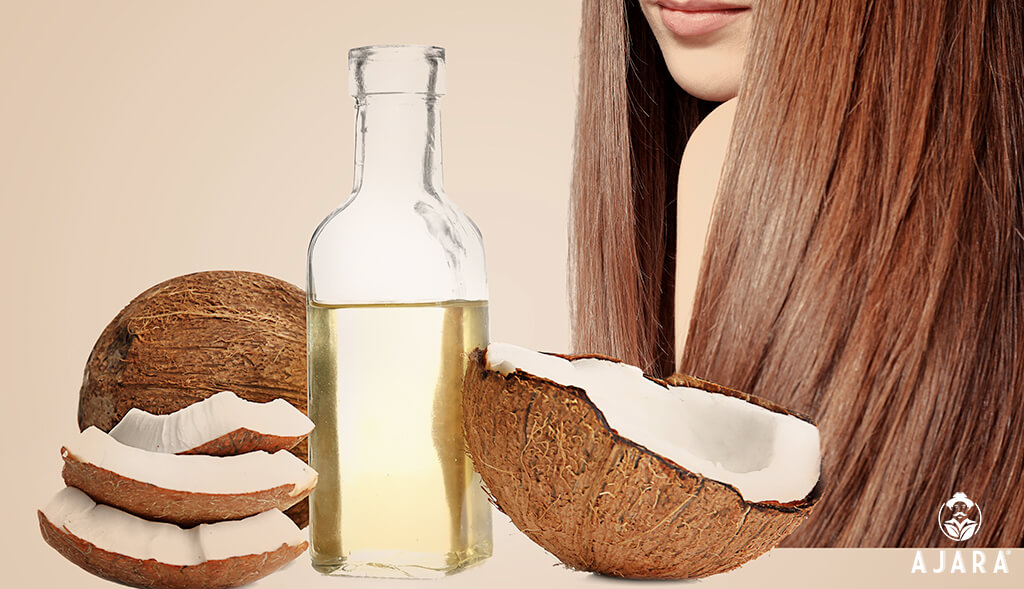Coconut oil: a panacea for your hair
By virtue of its composition and its beneficial properties, coconut oil is widely used both in the gastronomic field, especially in desserts and in vegetarian and vegan diets to replace other vegetable oils, than in cosmetics.

By virtue of its composition and its beneficial properties, coconut oil is widely used both in the gastronomic field, especially in desserts and in vegetarian and vegan diets to replace other vegetable oils, than in cosmetics.
One of the uses with the most surprising results of this product, which is increasingly in demand, is that of taking care of your hair ... let's find out how!
Coconut oil for hydration and shine of hair
The extraordinary cosmetic effect of coconut oil is due to the fact that it penetrates the hair more deeply and faster than other balms, being mainly composed of medium chain fatty acids.
Use pure coconut oil to repair split ends, nourish hair deeply and moisturize the scalp. The ideal duration of this treatment is at least an hour (even better two): the longer you let coconut oil act on your hair, the greater its effectiveness!
1. Wash your hair and let it dry naturally as you prepare for the treatment.
2. Take the equipment: a comb, a shower cap or a towel to wrap the hair, a small bowl and your coconut oil jar.
3. Put an adequate amount of coconut oil in the bowl, depending on the length of your hair.
4. Heat the coconut oil slightly in a bain-marie.
5. Once liquid, apply coconut oil to the hair with your hands and gently massage, then comb it.
6. After you have finished applying the oil, cover your hair with a shower cap or towel and let it work for at least thirty minutes or more.
7. Wash your hair to remove oil.
8. Alternatively, for the specific treatment of the tips, you can reapply, after washing, a small amount of coconut oil on the tips of your hair and comb again.
9. Dry the hair.
Your hair will be shiny and deeply nourished!
Coconut oil: your ally in the battle at the knots
Coconut oil will be your daily ally in fighting knots especially for you who have long or curly hair, leaving no residue.
1. Heat the coconut oil slightly in a bain-marie in a small bowl.
2. Once liquid, apply the coconut oil to the hair with your hands and gently massage, then comb your hair from the ends to the roots, gently working the tangles and knots with the comb.
3. Let it penetrate and act for about thirty minutes, then comb and dry the hair as you always do
4. No shampooing: coconut oil will continue to nourish your hair all day!
Best wishes to all the knots !!!
Coconut oil: helps fight dandruff and strengthen hair
Essential fatty acids and vitamins naturally present in coconut oil deeply nourish the scalp and help remove the accumulated sebum from the hair follicles. Use natural and organic coconut oil regularly to combat dandruff problems, leather irritation (due to the use of shampoos and aggressive chemical treatments) and to support the growth of strong and robust hair.
Every evening, after washing the hair with a mild shampoo and drying it, pour in a bowl a quantity of coconut oil proportionate to their length (if necessary slightly heat the coconut oil in a bain-marie until it is liquid).
At this point, use your fingers to gently massage the scalp with oil. If you have long hair, try putting yourself upside down and proceed to the message until the oil is evenly distributed over the leather. Wrap your head with a towel or a cloth and let the coconut oil work through the night.
Day after day you can say goodbye to leather irritations and you will have healthy, strong and shiny hair!
Small tip: in the morning, before drying your hair, distribute your organic coconut oil evenly from the roots to the tips and then proceed to dry. In addition to strengthening them and making them shiny, coconut oil will act as a filter to protect them from the sun's rays!
Disclaimer
The information provided on Ajara.it is of a general nature and purely for informational purposes and cannot in any case replace the advice of a qualified doctor (ie a graduate in medicine qualified for the profession) or, in specific cases, of other health workers (dentists , nurses, pharmacists, physiotherapists, and so on).
The notions and any information on medical procedures, dosages and / or descriptions of drugs or use products present in the proposed texts and in the published articles have only an illustrative purpose and do not guarantee to acquire the necessary manual skills and experience for their use or practice.
Ti potrebbero interessare anche questi post
-
Venerdì 20 Marzo 2020 -
Venerdì 13 Marzo 2020 -
Wheat grass powder, properties, preparation benefits
Giovedì 5 Marzo 2020 -
Pure Noni juice, properties and benefits
Venerdì 28 Febbraio 2020 -
What is Matcha? Benefits and properties of Japanese green tea powder
Giovedì 20 Febbraio 2020 -
Manuka honey with a thousand properties
Lunedì 17 Febbraio 2020 -
Manuka MGO honey: what the abbreviation mg means and how to use it to obtain benefits
Giovedì 13 Febbraio 2020 -
Organic Matcha Green Tea Protein Pancakes
Mercoledì 12 Febbraio 2020 -
Manuka honey therapeutic properties, benefits and how to best use it
Mercoledì 5 Febbraio 2020 -
Pancakes with coconut oil
Mercoledì 31 Luglio 2019 -
Matcha tea pancakes
Mercoledì 24 Luglio 2019 -
Natural exfoliating scrub with coconut oil
Mercoledì 19 Giugno 2019 -
Coconut Oil: short pastry (various types)
Martedì 18 Giugno 2019 -
Matcha green tea biscuits
Martedì 11 Giugno 2019 -
Matcha tea pancakes and coconut oil
Martedì 4 Giugno 2019 -
Coconut oil for our four-legged friends
Mercoledì 24 Aprile 2019 -
Coconut Oil in the Kitchen
Lunedì 22 Aprile 2019 -
How to prepare the real Matcha Japanese ceremonial tea
Lunedì 1 Aprile 2019 -
The benefits of coconut oil
Mercoledì 20 Marzo 2019 -
Chocolate tartufini with coconut oil
Martedì 19 Febbraio 2019 -
Muffins with coconut oil
Mercoledì 6 Febbraio 2019 -
Goji water, refreshing summer recipe
Venerdì 1 Febbraio 2019 -
How to use Chia seeds
Mercoledì 1 Agosto 2018
